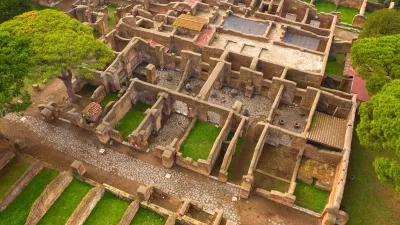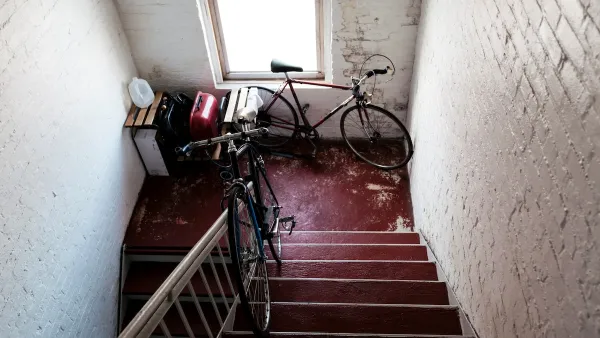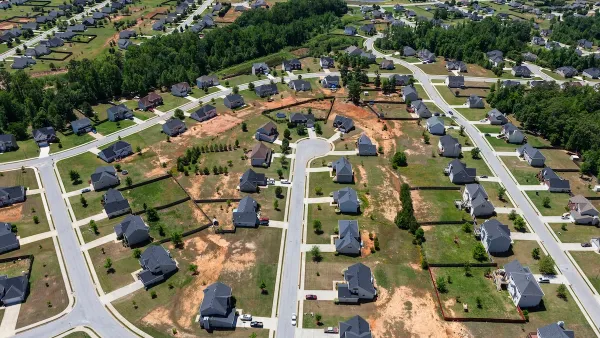The humble apartment, as a typology, has been with us for millennia.

The urban apartment, while it may feel like a modern invention, dates back thousands of years, writes Ashley Gardini in a piece for JSTOR Daily.
In the Americas, the ancient city of Teotihuacan housed up to 200,000 people in compact compounds. “While these may have looked a bit different than what we think of as apartments today, evidence shows that these structures ‘generally consist[ed] of several rooms at slightly different levels, arranged around open spaces (courtyards, refuse areas, and light wells) that serve[d] as places for ritual, rainwater collection, partial refuse disposal, and light provision.’” In ancient Rome, ‘insulae’ of up to five stories housed residents of crowded cities.
Later in history, planners and leaders attempted — with varying degrees of success — to sanitize and organize cities by building massive apartment blocks. As technology evolved, so did the ability of builders to construct larger and taller buildings. “In the twenty-first century, even as we continue to build larger and taller structures, architecture needs to respond to the climate crisis and other evolving environmental factors.” A wood-based material called mass timber is being explored as a sustainable alternative to other construction materials that is strong enough to use in buildings of up to 25 stories (to date).
FULL STORY: The Eternal, Essential Apartment

National Parks Layoffs Will Cause Communities to Lose Billions
Thousands of essential park workers were laid off this week, just before the busy spring break season.

Retro-silient?: America’s First “Eco-burb,” The Woodlands Turns 50
A master-planned community north of Houston offers lessons on green infrastructure and resilient design, but falls short of its founder’s lofty affordability and walkability goals.

Delivering for America Plan Will Downgrade Mail Service in at Least 49.5 Percent of Zip Codes
Republican and Democrat lawmakers criticize the plan for its disproportionate negative impact on rural communities.

Test News Post 1
This is a summary

Test News Headline 46
Test for the image on the front page.

Balancing Bombs and Butterflies: How the National Guard Protects a Rare Species
The National Guard at Fort Indiantown Gap uses GIS technology and land management strategies to balance military training with conservation efforts, ensuring the survival of the rare eastern regal fritillary butterfly.
Urban Design for Planners 1: Software Tools
This six-course series explores essential urban design concepts using open source software and equips planners with the tools they need to participate fully in the urban design process.
Planning for Universal Design
Learn the tools for implementing Universal Design in planning regulations.
EMC Planning Group, Inc.
Planetizen
Planetizen
Mpact (formerly Rail~Volution)
Great Falls Development Authority, Inc.
HUDs Office of Policy Development and Research
NYU Wagner Graduate School of Public Service





























